


Did you know that the average American spends $152 on food delivery every month? At first glance this information may seem unimportant but when you consider food delivery apps earn up to 30% of each order, it sounds pretty tasty.
Though the food delivery market is dominated by UberEats, DoorDash and GrubHub, there’s always a way for entrepreneurs to find a way to develop a successful food delivery app and take their niche. Take your first step right now! Learn everything you need to know about food delivery app development with our guide and you should use the table of contents if you’re searching for specific info like food delivery app cost, business models, or steps to launch a delivery app.

Sure! It’s undoubtedly worth it to create a food delivery app. Food delivery solutions were popular before the pandemic but now they're skyrocketing in popularity. Let’s have a look at recent research on the food delivery business.
How many people order food online? According to Statista’s research, user penetration in the food delivery segment amounts to 28.2% in 2025. This means one in three people orders meals online.
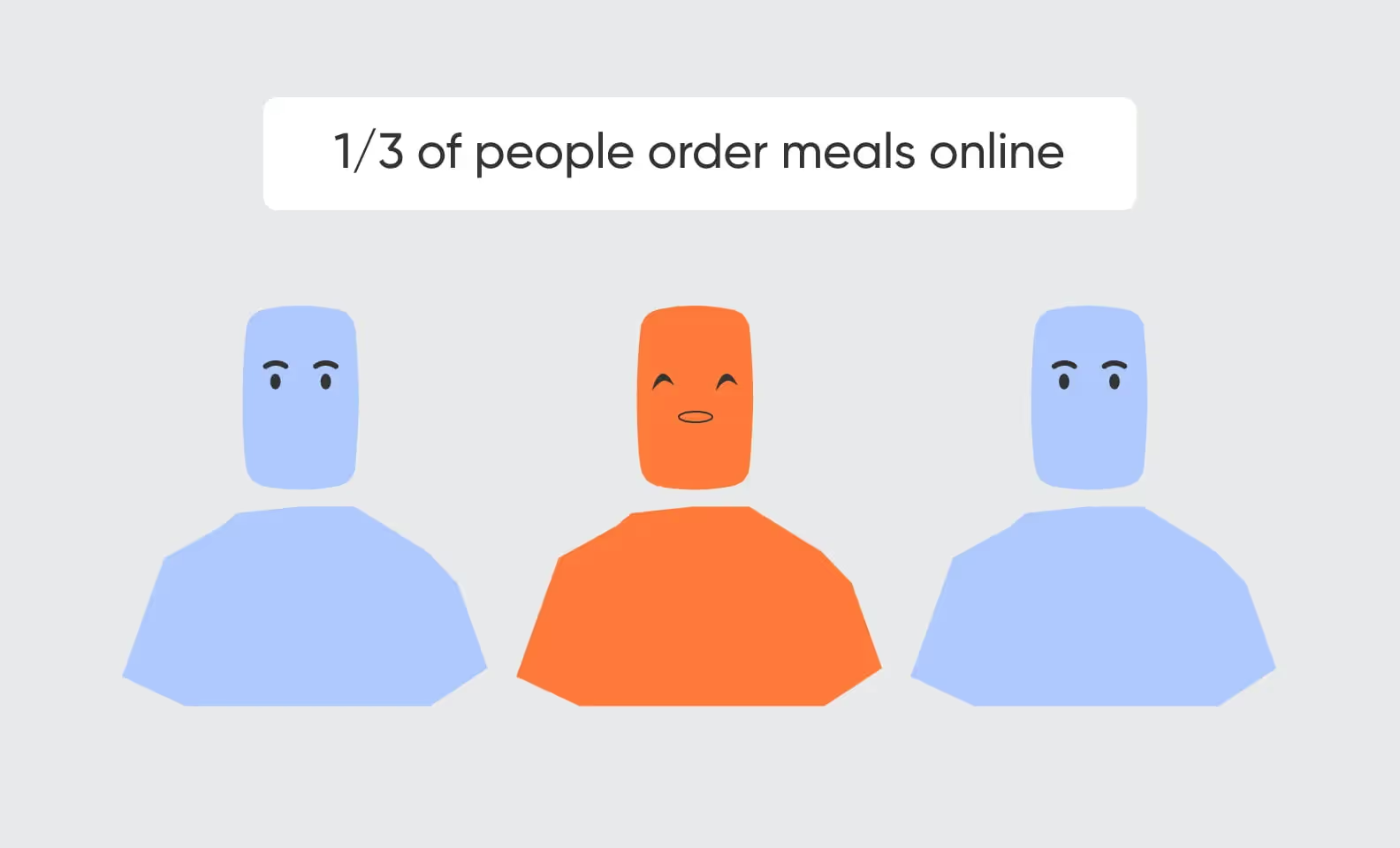
The fact that 55% of consumers say convenience is the main reason they use online food delivery, according to Kantar’s research, and its clear food delivery services make people’s lives easier. The other 45% of customers say they order food online as a reward or treat. Whether it’s the first pizza in your new apartment, date night or Friday Night Chinese, online food delivery even stirs some deep emotional roots.
It’s not only clients benefiting from delivery apps, but the restaurants themselves. For example, fast-food restaurants are by far the most popular and most dependent on food delivery. Two-thirds (67%) of the total revenue of quick-service restaurants comes from food delivery and pickup, while 33% comes from eat-in sales. Mobile food ordering business is flourishing, as well as desktop food delivery apps.
According to a report by Grand View Research, the global online food delivery market revenue is projected to reach over $500 billion by 2030.
It’s clear that food delivery solutions are in high demand, but what actually makes them useful? Let’s go over some of the key benefits of online food delivery apps:
Why spend time driving to the restaurant when you can use a food ordering app? Online food delivery helps your customers better manage their time and allows restaurants to optimize their business workflow.
The average restaurant app of today combines a simple and intuitive user interface with an eye-catching design. Food delivery app development focuses primarily on interactivity and accessibility — this helps attract and retain customers.
Today’s online food delivery apps entice clients with a wide range of restaurants to suit every taste. Providing customers with a diverse selection of restaurants will allow your food ordering app to gather a larger audience.
Food delivery app development will provide your business with additional income. You can incorporate multiple revenue streams into your food delivery mobile app, including subscriptions, ads, and restaurant commissions.
People across the world have at least one thing in common — we all enjoy a good meal. A food delivery mobile app can take advantage of this fact. Besides, modern food delivery solutions don’t just focus on restaurants — they also deliver from supermarkets and stores. This means that food delivery app development allows us to tap into many different lucrative audiences and niches.
A food delivery app startup doesn’t need a lot of resources to get up and running compared to regular restaurants. Opening a new restaurant requires renting a physical space, obtaining permits, and buying equipment, all of which incur additional costs. A food delivery mobile app can be developed even by a small team and won’t cost nearly as much to launch.
By starting delivery app development, you can tap into the booming market. The popularity of delivery apps is growing, and the latest stats prove it.
Pull the trigger on your on-demand delivery app idea with Purrweb.
These impressive stats do raise the question of how food delivery apps make over $323 billion a year? It’s a huge number and hard to comprehend. Just for context, 323 billion is enough to:
We haven’t even got to discussing future potential. There are four key ways to make money off of food delivery:
Just like a broker, food delivery apps take a cut from the restaurants for each order they bring in. Let’s say you order a pizza from a restaurant using the app, it charges the pizzeria for the introduction. Fair enough, as this fee supports the app and makes it easier for restaurants to connect with a larger number of customers.
This fee covers the cost of getting the food from the restaurant to the customer’s door. So, while you enjoy the convenience of doorstep delivery, the app earns a little extra something. Often apps charge a small fee — from $0.99, like UberEats, to even 30% of the order price like Swiggy. The delivery fee can depend on how far away you are from a restaurant and the total value of the order.
In some food delivery apps you often see ads from nearby restaurants or food businesses, allowing restaurants to show off their dishes or offers to attract more customers. Restaurants pay extra money to feature in these ads which helps both sides, allowing the app to make more money and restaurants to reach more clients.
The subscription model isn’t exclusive to Netflix, food ordering apps offer special passes to customers that give them exclusive benefits. For example, free delivery or discounts on orders. To enjoy these benefits, customers pay a monthly subscription fee.

When it comes to generating revenue, there are various strategies to utilize:
In the aggregator business model, your food delivery app startup a mediator, connecting hungry customers with restaurants. An example would be a food delivery app like UberEats. You partner with various restaurants and list their menus on your app. The most popular food delivery apps work as aggregators: UberEats, GrubHub, DoorDash. Much more convenient for the customers, they simply browse through the menus and place their order directly on your platform with all the options in one place. This'll help you cover all the delivery app development expenses and earn much more than you’ve invested.
Examples: UberEats, GrubHub, DoorDash
Unlike the aggregator model, the inventory order and delivery model requires the food ordering app to own and operate its kitchen spaces or “ghost” restaurants. So you have full control, from the kitchen to the delivery. You set your menu prices so you cover the overheads from cost of ingredients to labor and delivery app development), while still leaving a tasty profit. There’s also the option to add a small delivery fee for extra income and cut down on expenses even further.
Examples: Daily Harvest, Mosaic Foods
The food delivery app partners with other businesses like food delivery platforms, selling related products or meal kit services. You team up with other businesses, like restaurants or grocery delivery. These businesses list their products or meals on your app and you in turn promote their goods to your loyal app users. Unlike the previous two business models, here users don’t actually order food in the app. Instead the app simply transfers them to the restaurant’s own website to place the order and the app earns a commission for every customer referred to these partner businesses. It’s like a referral program that benefits everyone.
Example: Yelp
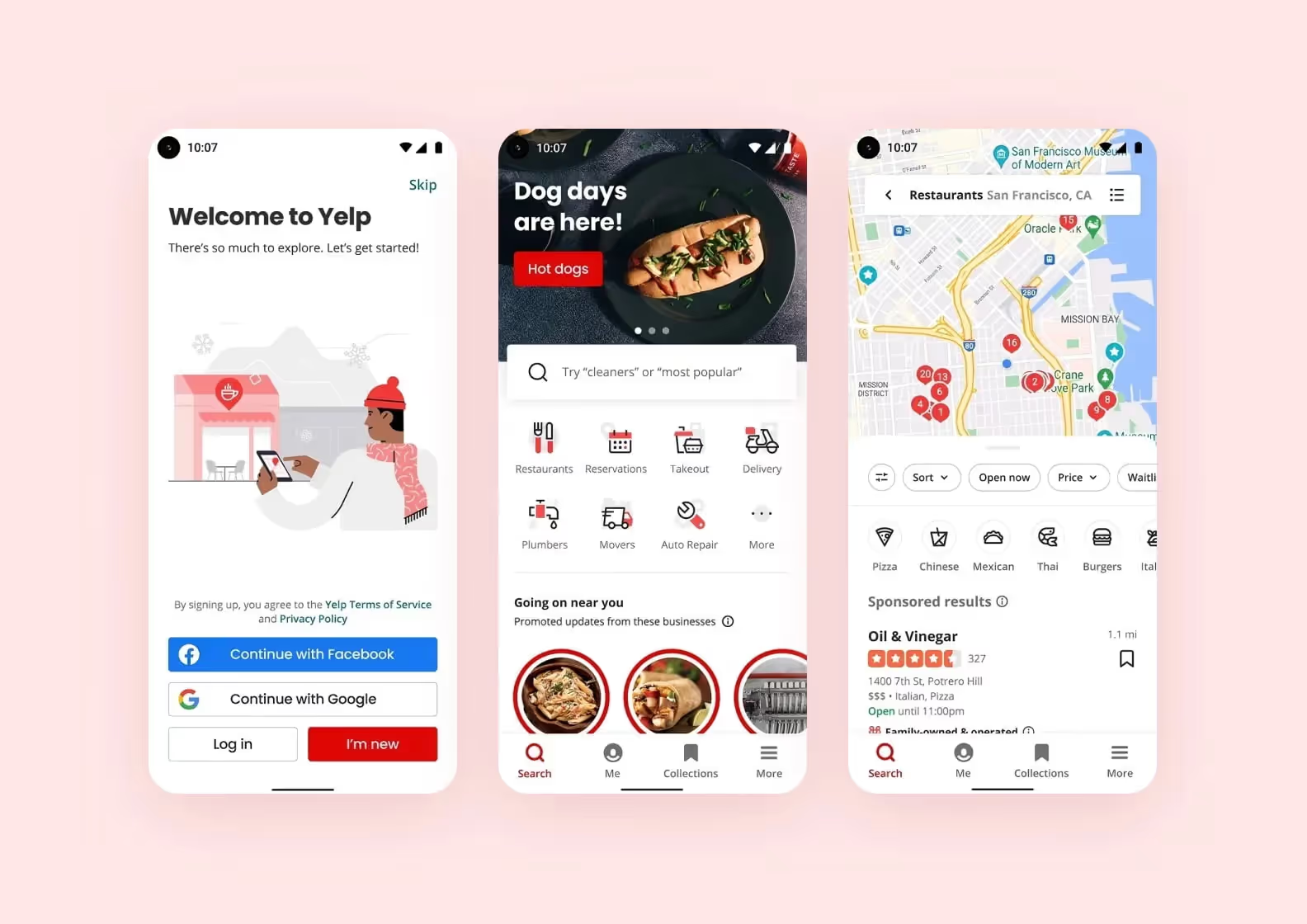
Imagine you’re starting your own food delivery business, but want to skip the time-consuming process of delivery app development from scratch. A ready-made solution business model is vital. As a food delivery app startup owner, you offer your technology and a food delivery platform as a white-label solution to restaurants and other businesses. Restaurants can have their branded app or website powered by the delivery app‘s technology and the delivery app simply charges a fee for providing this service. The difference from other business models is that you’re not selling a complete app, but the technology itself, allowing you to offer your product to many restaurants at once.
When you build a full-service food delivery, you’re not just taking orders and delivering food. In this model, the food delivery app goes beyond just nearby restaurants and includes other food-related businesses like grocery delivery, specialty grocery stores, or even alcohol delivery. The app becomes a convenient one-stop-shop for users, allowing them to order all sorts of items, food or otherwise. Customers can get everything they need in one place, making the app even more useful to them, which in turn brings their loyalty.
We bet you’ve already used some of these delivery apps:
This food ordering app partners with many restaurants, giving users infinite choice. From pizza and burgers to sushi and salads – you name it, they’ve got it. DoorDash provides a full-service delivery model that includes groceries and alcohol, making it more convenient for customers. The app attracts new customers with a free trial month of DashPass, so they “save” because they don’t pay the delivery and service fees during this period.

Grubhub is a popular food delivery app that makes it easy to order food. The key feature is that because they work with lots of restaurants, you have plenty of choice. The app is easy to use, allowing you to see menus, check ratings, and read reviews from other customers to help decide what to order.
Although Grubhub faces competition from DoorDash and Uber Eats, it differentiates itself by fostering partnerships. For example, it has integration with Amazon Prime, offering free Grubhub+ memberships to Prime users. Grubhub is also integrating AI-powered customer personalization and exploring environmentally friendly delivery methods.
Some time ago, UberEats was focused on delivering meals from local restaurants. Well, not anymore. The current version of the app allows you to buy all your groceries online with a pickup delivery option and what’s more, customers can even choose between immediate deliveries or scheduled orders, allowing them to plan their meals in advance (as well as handling the age old sales objection of “I don’t need it right now”. A sleek, minimalist design (both slick and functional) is the cherry on top.
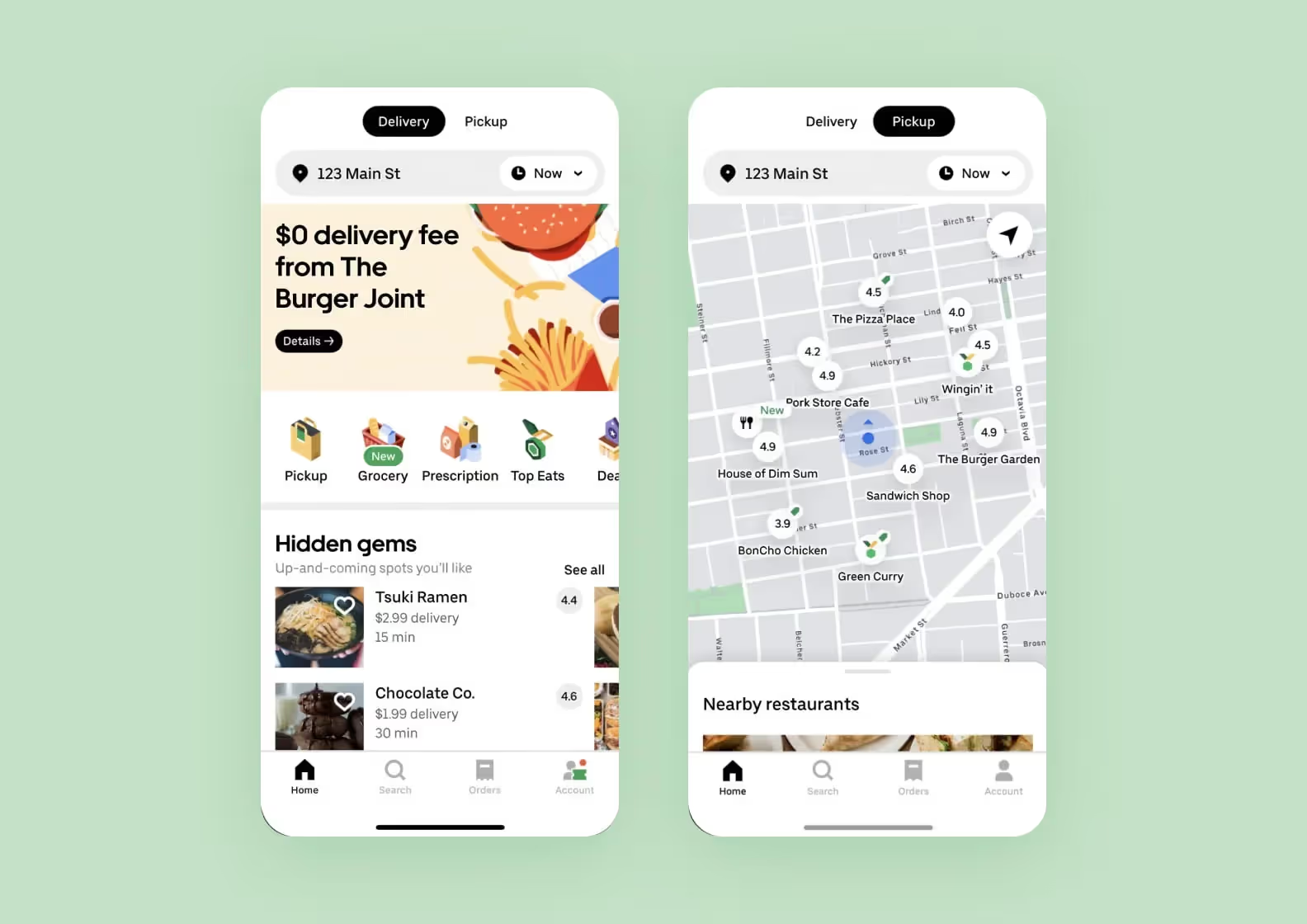
Bolt Food is a famous food delivery app connected to the Bolt brand well known for cabs and as part of the same customer app as Bolt ride-hailing, if you use the Bolt app for rides, you can easily switch to Bolt Food for food delivery in the one app. Bolt Food focuses on being super fast and efficient, making sure your meal arrives at your door as quickly as possible. Their delivery system is optimized for speed to get your food to your doorstep while still hot.
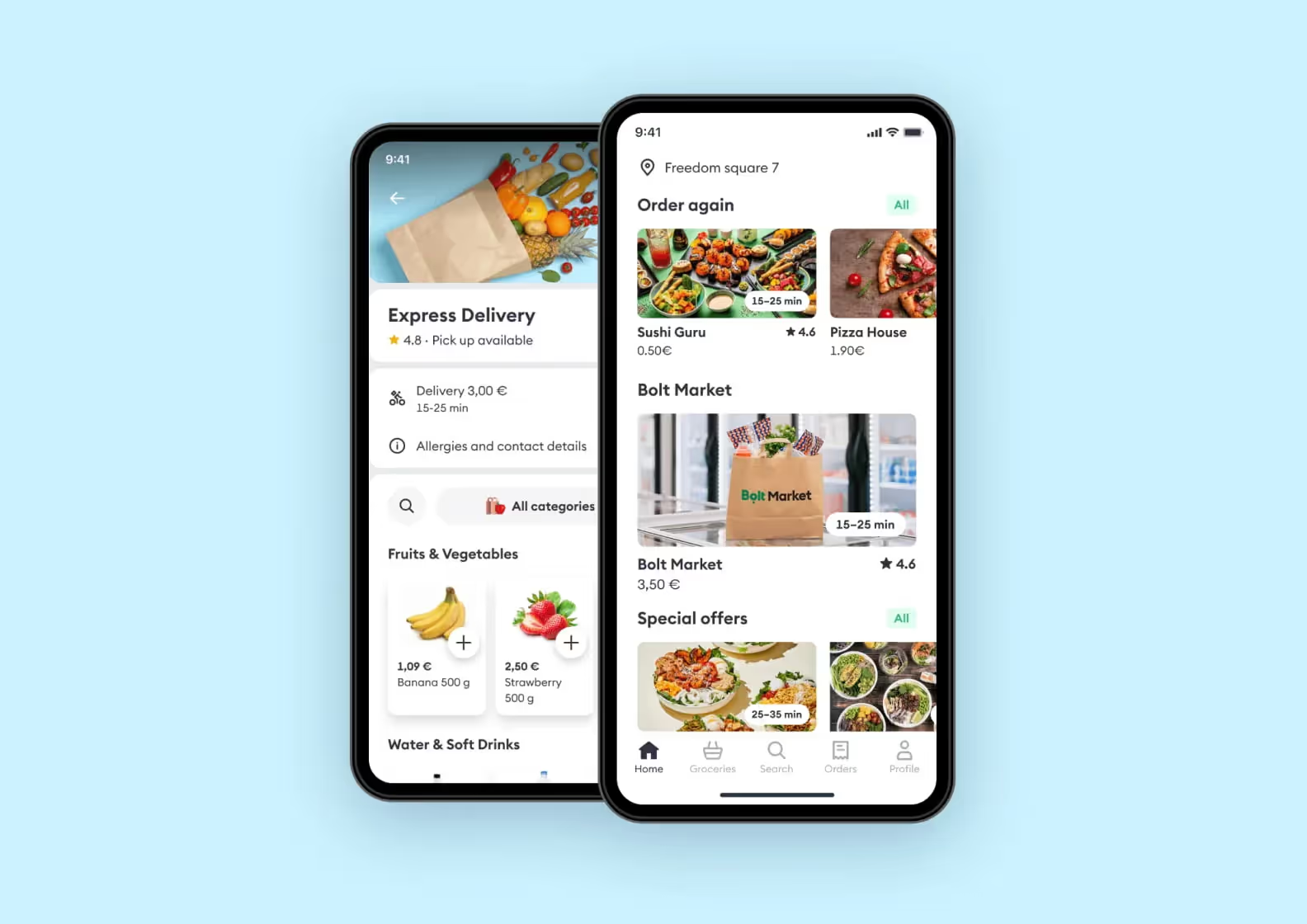
Deliveroo is focussed on a fast service as well as it arriving with as little packaging as possible, reducing waste. In Dubai, Deliveroo couriers used jet skis to deliver food to customers who were on a yacht cruise. It was a fun and creative way to show their delivery service works even on the water.
Just like creating the perfect recipe, building a food delivery app takes patience and good guidance. We’ve got you covered.
The food delivery market is highly competitive, with lots of big companies and new food delivery startups competing for customers, it can be tough for new food businesses to stand out and get noticed.
Solution: There’s always room for improvement. Just do your research, find gaps in the market and ways to satisfy the customers’ needs. Maybe you’ll even create an app that doesn’t clear the whole order because of an accidental misclick (please, do it).
Making sure deliveries arrive on time and without any failures is a tall order, especially during peak hours and in crowded areas. Figuring out the best ways to handle deliveries efficiently is crucial to keep customers happy.
Solution: Pay attention to the competence of your delivery personnel. Make a user-friendly courier app. Implement some motivation systems to improve the quality of their work and choose wisely if you’re working with a third-party delivery service. Still, no one is safe from difficult situations. At least, let your customers track their orders to ease their mind.
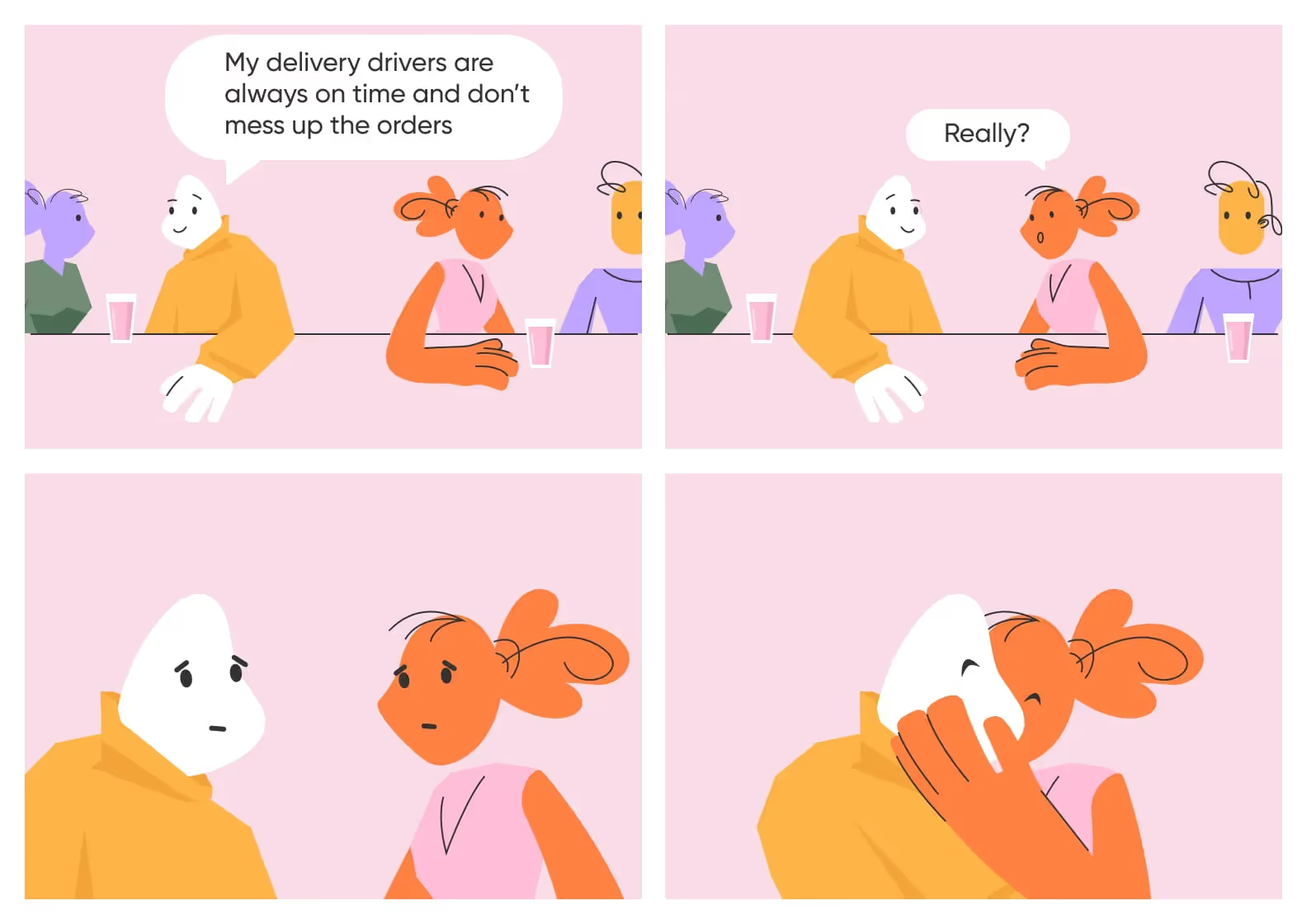
Keeping the food quality consistent across different restaurants can be tricky. Making sure every order is just right requires solid communication and careful monitoring.
Solution: Discuss the expectations with your partner restaurants and set clear standards for food delivery service. Check the quality yourself and examine feedback from customers. Don’t worry, if something’s wrong, they’ll tell you about it on all the review platforms. Twice.
Protecting customer information requires using strong security measures to prevent any potential breaches and maintain customer trust. Keep this in mind when starting your app development.
Solution: Keeping customer info safe is a must. So you’ll have to use strong security systems and follow data protection rules… Are you still reading? All the safety stuff can be boring, but here’s a trick: leave the development process to programmers and chill.
Figuring out the right balance between charging restaurant fees and keeping prices affordable can be tough. Still, it’s essential to develop a food delivery app with a sustainable revenue model.
Solution: Again, do the research. Learn what customers like most and how much they are willing to pay for it. Play long-term instead of making choices in the direction of quick profits, so the delivery app development pays off.
Some customers prefer credit cards, others prefer digital wallets or mobile payment apps and some still use cash. Managing all these payment options can be tough, but it’s essential to make sure everyone can pay easily and securely in your delivery app.
Solution: Make it easy for people to give you money. This is a key rule in any business. Plus, more payment options means you don’t lose customers at the final stage. A food delivery app should work with a variety of payment systems. Give simple instructions for adding and managing payment methods to make it easy for customers to pay.
The food delivery app workflow consists of 6 steps. Each step in this process relies on specific features of the app delivery platform:
Let’s have a look at the key features people usually need while using food delivery apps:
1️⃣User profile. None Shall Pass… unless they’re registered. A user profile should store delivery addresses, payment methods, and order history. Allow app users to register or sign up using social media platforms.
2️⃣Restaurant listings and search. Display a list of local restaurants with their menus, ratings and reviews. Implement search and filters to help users find specific cuisines or dishes. For example, if the customer is a vegan, the app will show them a list of restaurants that offer delicious vegan dishes. So everyone can find what they’re craving, using your food delivery application. No matter if it’s a delicious vegan burger or a juicy steak.
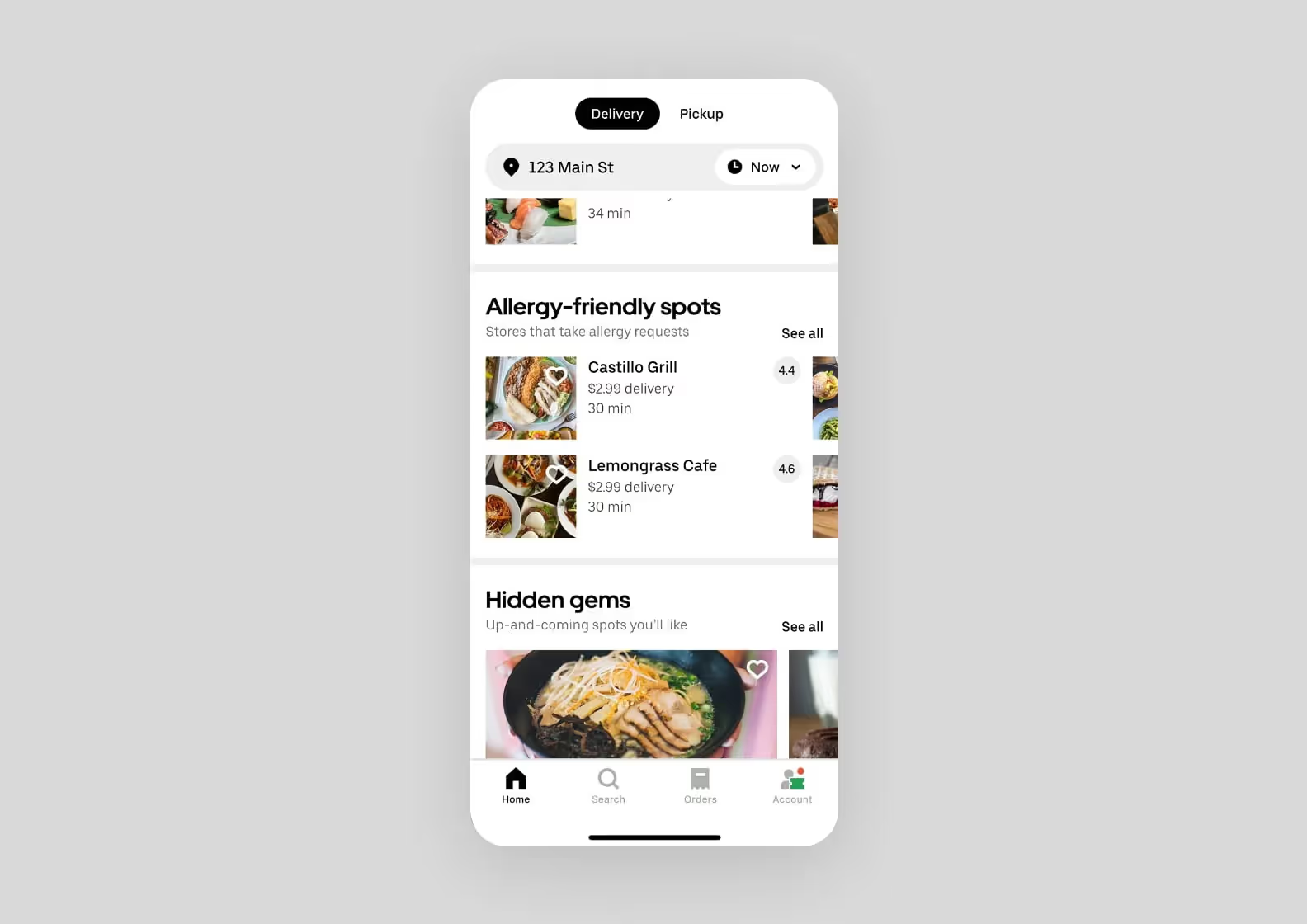
3️⃣Menu browsing and order customization. Users want to browse restaurant menus, view item details and customize their orders. For example, choosing toppings, changing the spice level, or adding a fork instead of chopsticks to the sushi order.

4️⃣Real-time order status tracking. Enable users to track their orders in real-time, from prep to delivery through push-notifications. This feature adds transparency and manages customer expectations, as well as preventing messages asking for updates. You also can add a funny “time-killer” to your user app for customers to tap something animated while waiting.

5️⃣Delivery scheduling and address selection. Allow users to choose delivery time and saved locations using your ordering system. For example, it’s convenient to order food in advance and enjoy it the moment you get back home.
6️⃣Reviews and ratings. Let users leave feedback and ratings for local restaurants and delivery services. This helps others make informed decisions and motivates restaurants to maintain quality service.
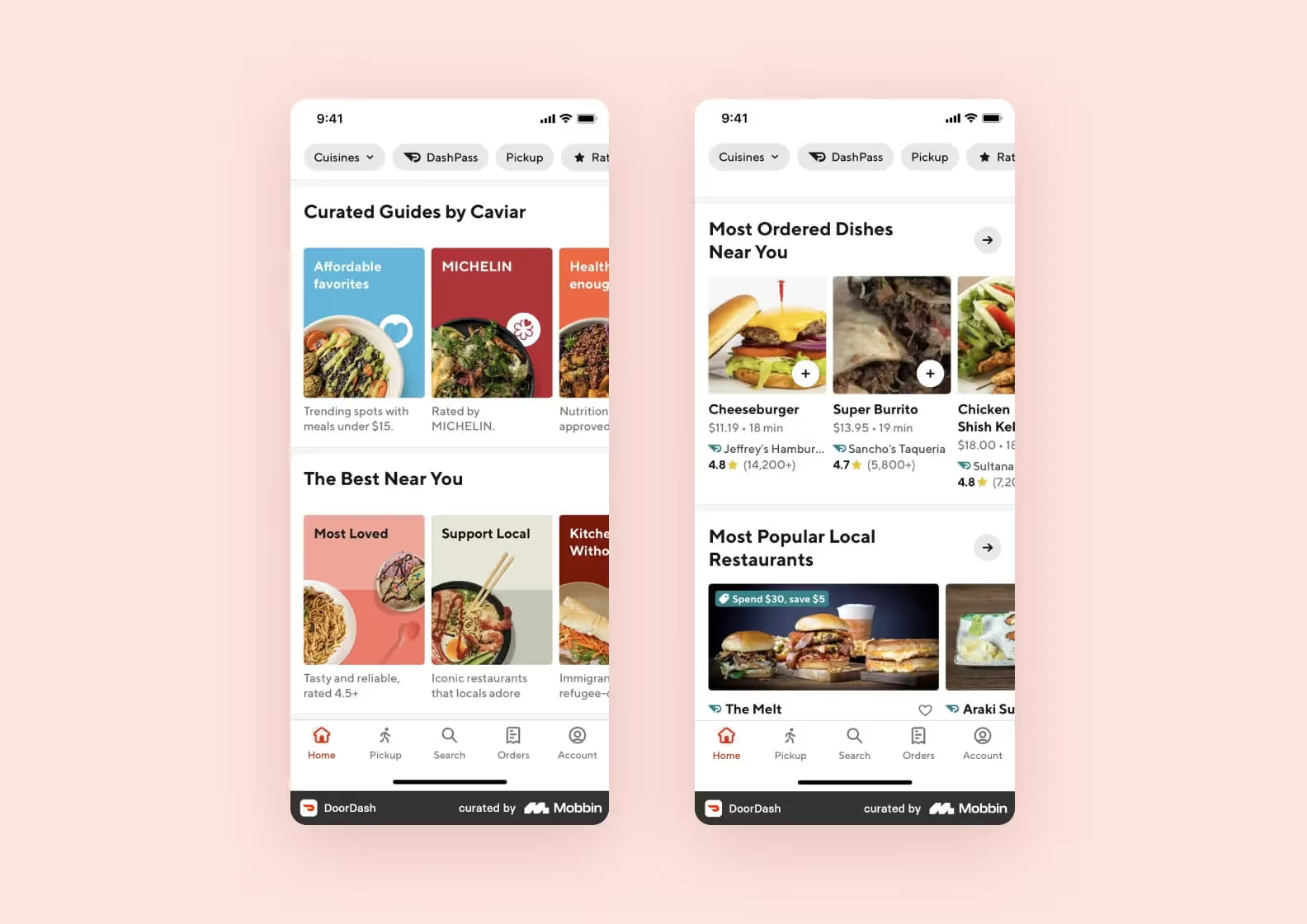
7️⃣Promotions and discounts. Notify users about ongoing promotions, discounts, and special offers through push-notifications in the customer app. This will encourage them to repeat orders and boost customer loyalty. Whether it’s a buy-one-get-one deal or a reduction on your order, the food ordering app keeps you updated on all the ways to save.
8️⃣Customer support. Provide a direct channel for customer support, such as an in-app chat or a helpline, to handle order-related issues or inquiries promptly. Research will show you that poor customer support is a weak spot for lots of custom food delivery apps.
9️⃣Quick selection forms. Let users add some details in a few clicks instead of writing notes in the box “Remarks”. For example, such options as “Leave at the door”, “Gate code 1234” or “Meet me outside.”
1️⃣Restaurant dashboard. The restaurant dashboard is like a control center for restaurants, it should be super easy for restaurants to manage everything from their online presence to handling orders.
2️⃣Order management. It’s all about keeping things organized and efficient for restaurants. When new orders come in on the admin panel, the food ordering app shows them in real time, so restaurants can see them right away. They can quickly decide to accept or reject the orders based on how busy they are, with proper order management.
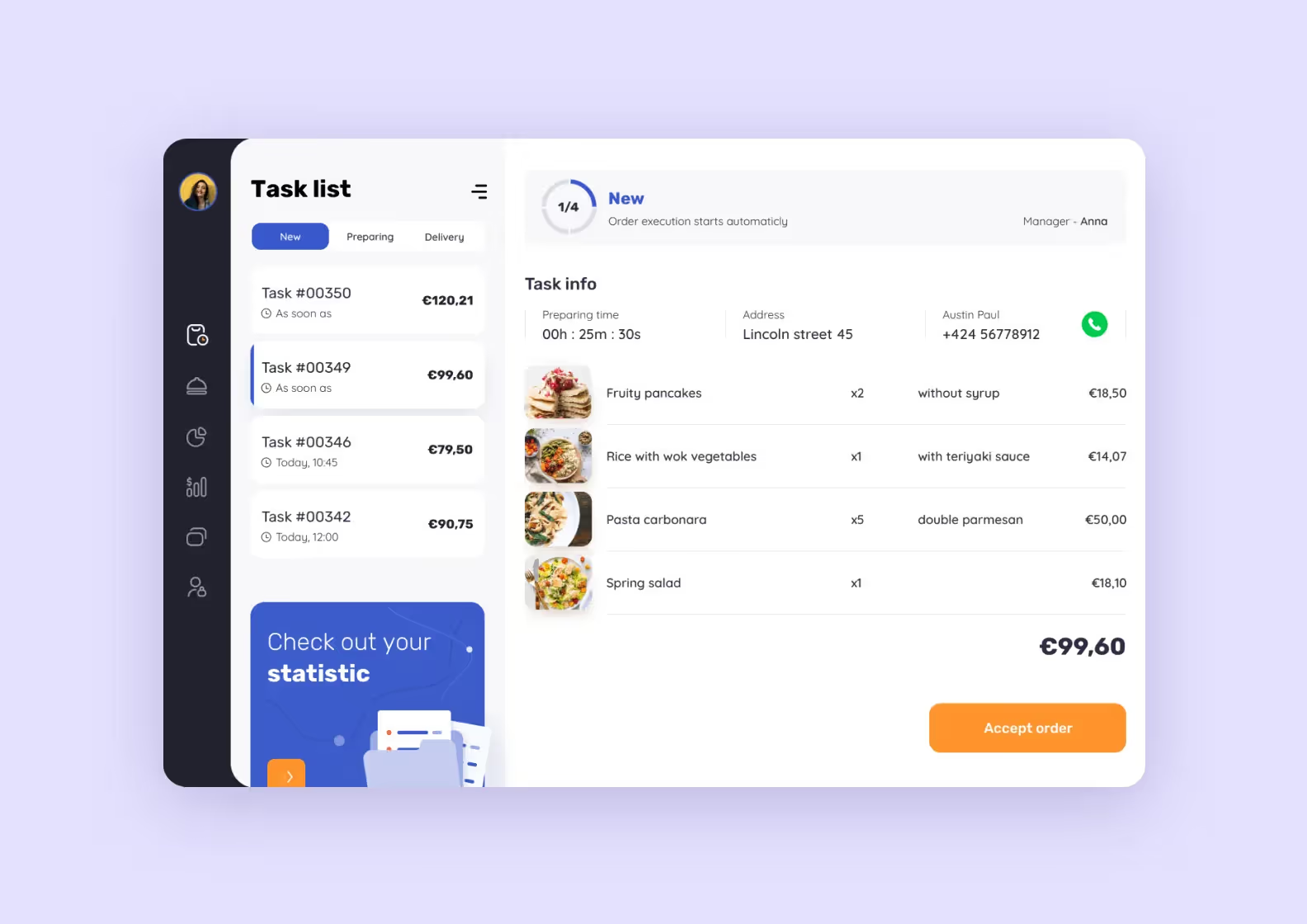
3️⃣Real-time push notifications. With real-time push-notifications, the app makes sure that restaurants get updates instantly. They’ll know when new orders come in and get all the information they need for smooth order processing. Whether it’s a new order or changes to an existing one, restaurants stay in the loop and can respond promptly.
4️⃣Stock management. Allow restaurants to monitor their inventory levels and update item availability on the restaurant app. This way, they won’t accidentally take orders for things they don’t have, sparing customer frustration.
5️⃣Delivery zone and distance settings. Restaurants should be able to set delivery zones and define maximum delivery distances. This helps them make sure they can handle all the orders and get your food to the door in time.
6️⃣Order analytics and reports. This feature gives restaurant owners helpful information. From the admin panel, they can see how many orders they get, popular items and peak times. This data helps restaurants make smart decisions and improve their services to make clients even happier.
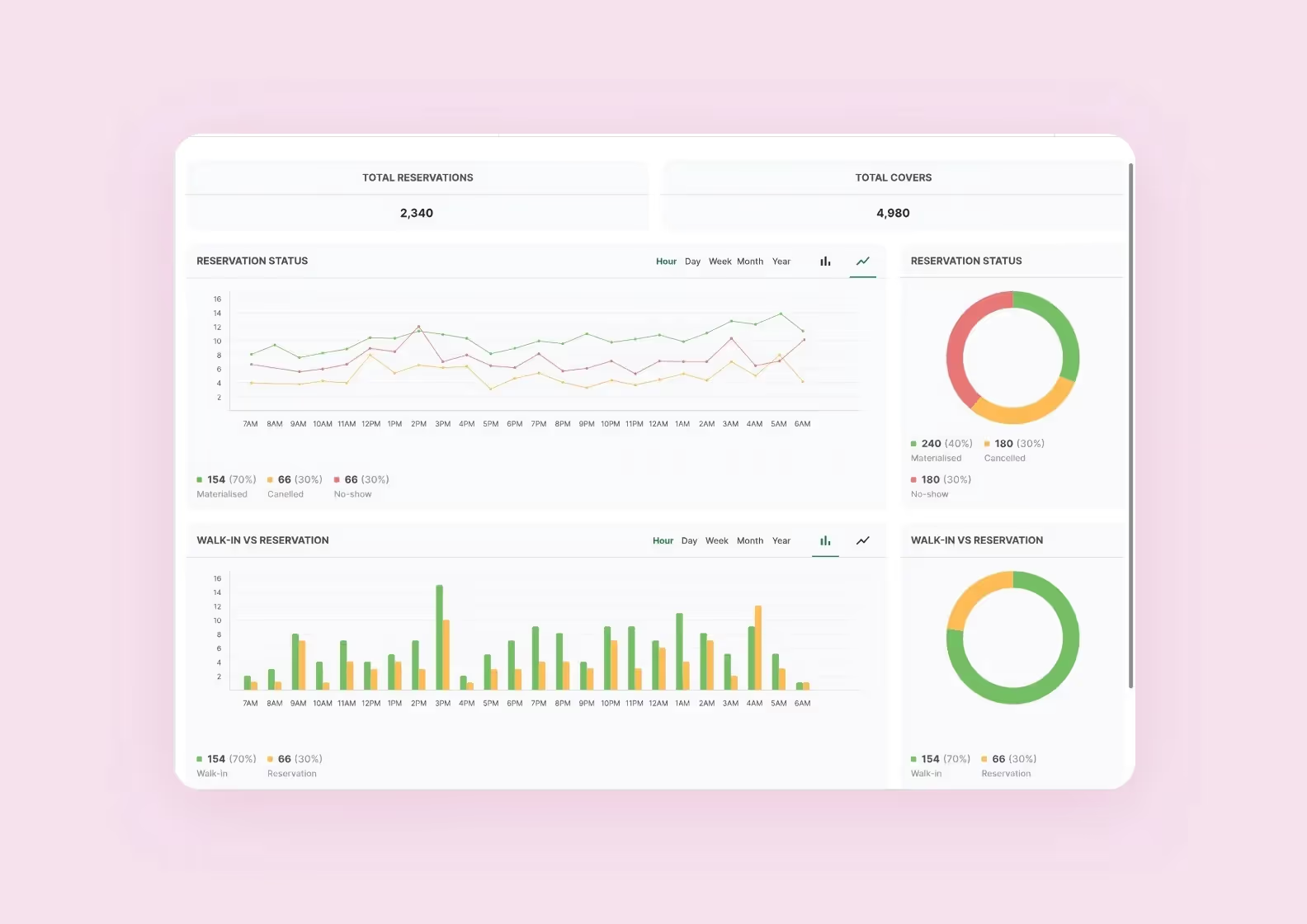
7️⃣Customer interaction and feedback. The delivery app lets restaurants talk directly to their customers through in-app chat or by sharing contact information. So restaurants can see and reply to customer reviews and ratings, showing that they care about customers.
8️⃣Payment and revenue tracking. Restaurants can easily see how much they earn, commission fees and overall earnings. Transparent financial tracking helps build a strong long-term partnership between restaurant owners and the food ordering app.

9️⃣Special offers. Give restaurants the opportunity to create and manage their own promotions and discounts to attract more customers and boost sales. This way, both you and the restaurant benefit from boosted sales and loyal customers.
1️⃣Real-time GPS navigation. To deliver orders quickly, couriers need GPS systems to guide them. Implementing a reliable GPS navigation system in your restaurant app will make the delivery process easier for everyone.
2️⃣Courier support platform. Delivering orders is hard, and couriers need a safety net to protect them in case of emergencies. With a support platform, couriers will be able to solve their problems and get help from support staff. This way, you’ll make your food ordering app more courier-friendly and attract employees through better working conditions.
3️⃣Real-time customer messaging. In case of navigation problems, couriers should be able to contact the customer and get responses through push notifications. Implementing real-time messaging in your food delivery mobile app will help couriers deliver orders faster.
4️⃣Reward system. Couriers should be rewarded for their hard work. A good way to do this is to create a courier reward system for your food delivery mobile app. Rewarding couriers for outstanding performance will give them an extra incentive to work even harder, increasing the quality of your delivery service.
5️⃣Tip system. Giving customers the option to thank the couriers with tips will help you retain the best delivery staff. It will also allow couriers to earn extra income, boosting their morale and motivating them to keep working for your online food delivery service.
Think about the tech stack before starting food delivery app development. It’s like a set of tools that affects how the app works and also influences how much the delivery app development costs. By choosing the right tech stack, we can create a restaurant app that doesn’t irritate our customers and works well.
After testing lots of different variants, we opted for JavaScript frameworks and have successfully developed 550+ projects using this tech stack. Here’s the detailed description:
You need a solid plan to make a successful food delivery app. Follow these essential if you want to contend with the likes of DoorDash and UberEats:
Do the research on what customers like, what’s trending in the industry, and who your competition is. Find gaps in the market and take advantage of these opportunities. This will help you understand the target audience better and make your app stand out in the food delivery industry.
Determine what sets your food delivery app apart from existing competitors. Focus on solving specific pain points for users, such as faster delivery, diverse app filters, or a more user-friendly interface.
Before starting delivery app development choose a business model that fits your goals and your target audience. You can pick options like partnering with restaurants or bringing a ready-made solution for them, for example.
Look for a reliable company with experience in building mobile apps and specifically food delivery apps. Check their portfolio to ensure they have the expertise and experience needed for your custom food delivery app project.
After researching the market, figure out what makes your app special. Maybe you already have the perfect food delivery app idea, but it’s not easy to decide on the app features by yourself. If you need some help, you can contact us to discuss your app ideas and get a free consultation.
Select the appropriate tech stack, including the platform (iOS, Android, or both), backend infrastructure, and database management. As we already mentioned, JavaScript frameworks prove to be a good option.
Let professionals create an intuitive and user-friendly app design. Feel free to discuss the concept and correct it if necessary. Keep the user experience in mind to make the food delivery app easy to use.
Take your time to thoroughly test the app, so that the development team can identify and fix any bugs or issues. Testing includes checking if all features work as intended, ensuring proper data input and output, compatibility with different devices and across different operating systems.
Use strong security for payment processing to make sure user data is safe. This protects users and builds trust in your food delivery app.
Launch your food delivery app on the app stores. Promote it through various channels. Take advantage of social media marketing and referral programs to attract more users.
Working with Purrweb is the right choice if you want to build a custom food delivery app quickly. Our previous food delivery app development took around 6 months. We also openly discuss all financial and time matters with our clients. The development process is transparent so you can check your projects’ Figma files and ask any questions to understand what’s going on.
When you make a food delivery app with us, you pay for:
UI/UX design. The design concept includes all the elements your app needs like the restaurant’s profile pages, reviews, order history, etc. We’re all for aesthetic and user-friendly design.
Front-end development. Usually, our clients choose React Native. So we can build both iOS and Android apps with one code and one development team. As a result, your app covers different mobile platforms, and a larger market, respectively. We can also develop a web or desktop application for you with React.js or Electron.js.
Back-end development. It helps different parts of the app exchange data smoothly. For example, when a user places an order or tracks the order status, cross interface communication works behind the scenes.
Project management. You don’t need to waste time talking to each employee directly. Just keep in touch with the project manager who’ll pass on your ideas to the team and make things done for you.
QA testing. We’re responsible for the quality of our products. So we need to ensure your food ordering app works well on different devices and keeps user data safe. That’s why we perform QA testing to find and fix any issues that may appear.
Overall, a team of 5-9 people will work on your food delivery app. Here is the timeline with prices:
According to similar projects we’ve made, the estimated cost of a food delivery mobile app is from $100,000 to $165,000 for a full cycle of development, including UI/UX design, creating iOS & Android versions, and QA testing.
All in all, food delivery app development has huge potential. Especially if you enlist the help of professionals. With a user-friendly interface, diverse restaurant choices, and efficient delivery services, your online food delivery app can stand out and become a go-to solution for hungry customers.
➡️ We’re ready to edge out other food delivery apps, are you? Once you come up with an app idea, <a class="blog-modal_opener">contact us</a>.